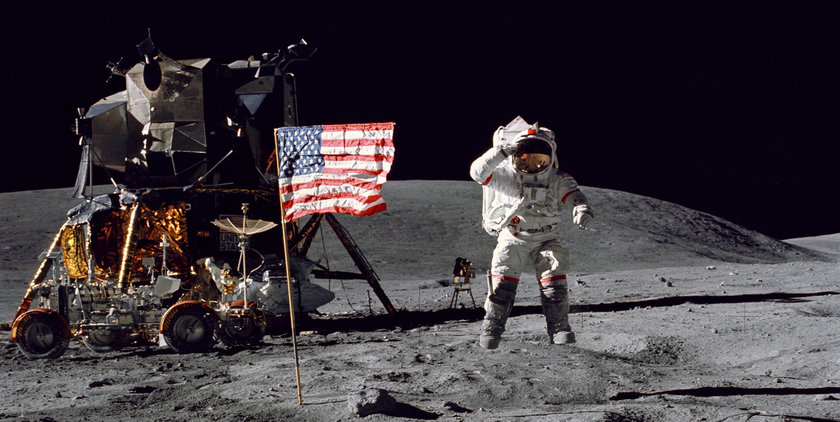While most Alabamians know you can find the Saturn V rocket in Huntsville, and thousands of kids beg to attend Space Camp at the city’s U.S. Space and Rocket Center every year, many people outside the state are surprised to learn just how big a role Alabama played in putting a man on the moon.
NASA’s Marshall Space Flight Center runs an amazing Flickr account, where they’ve posted several historical photos showing how integral Alabama has been to the country’s space program.
Here are 14 photos that show just how world-changing Alabama’s contributions to space exploration have been.
1.
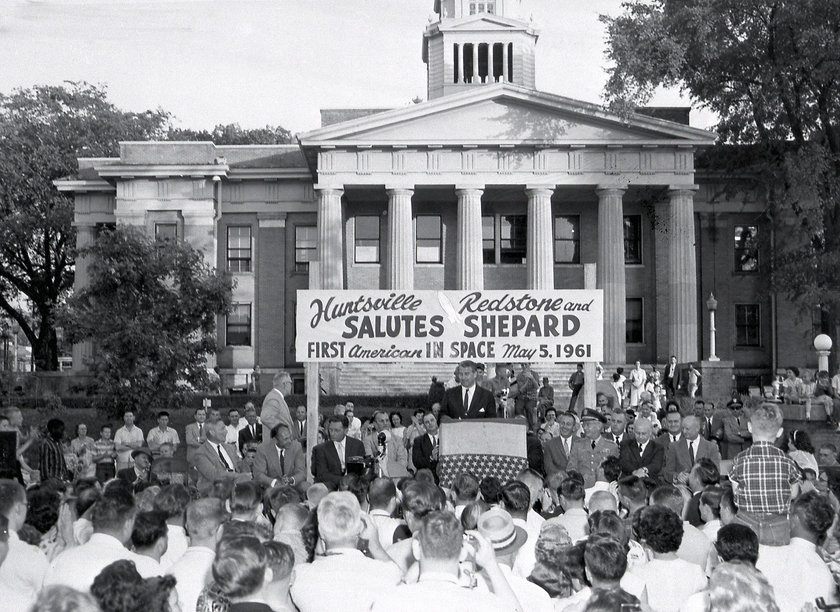
The launch of the Mercury-Redstone (MR-3), Freedom 7, placed the first American astronaut, Alan Shepard, in orbit on May 5, 1961. The Mercury-Redstone was built and tested at NASA’s Marshall Space Flight Center in Huntsville, Ala. People gathered around Huntsville’s courthouse to celebrate the landmark spaceflight.
2.
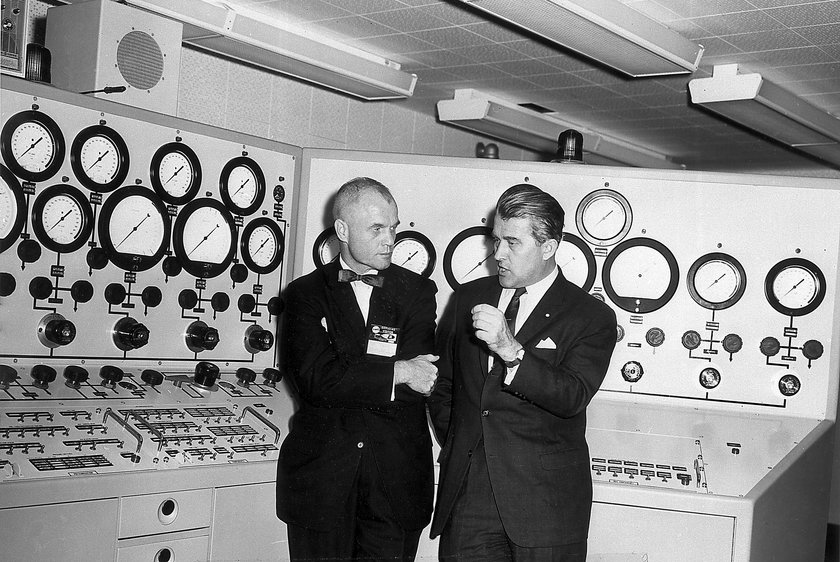
Dr. von Braun briefs Astronaut John Glenn, the first American to orbit the globe, in the control room of the Vehicle Test Section, Quality Assurance Division, Marshall Space Flight Center in Huntsville, Ala.
3.
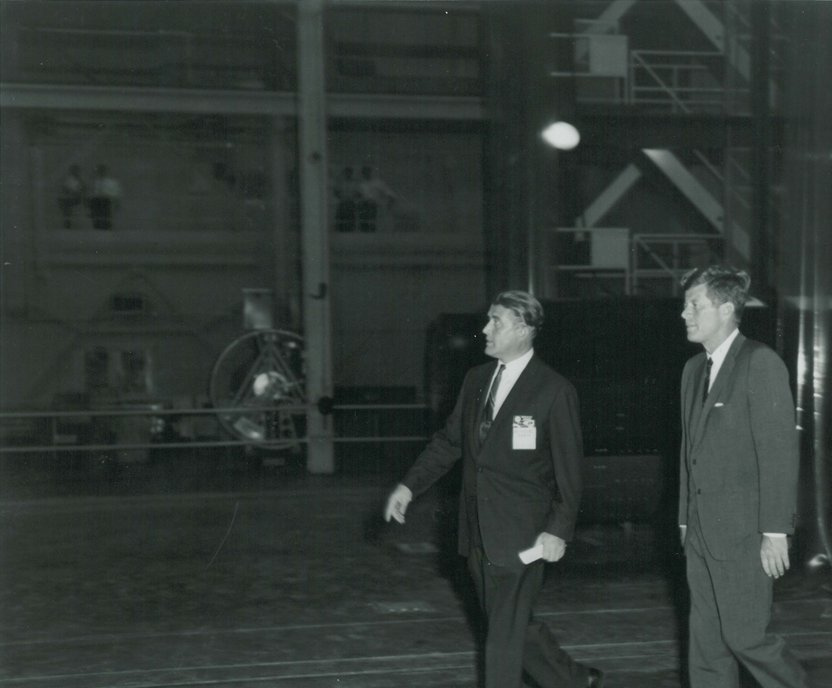
Dr. von Braun gives President Kennedy a tour of the Marshall rocket laboratory. The major goal of Kennedy’s visit was to seek assurances from Dr. von Braun and his team that the planned Saturn rocket could fulfill his promise of landing a man on the moon and returning him safely to earth before the end of the decade. Though Kennedy would tragically not live to see it, von Braun and the team at Marshall kept their promise to the President.
4.
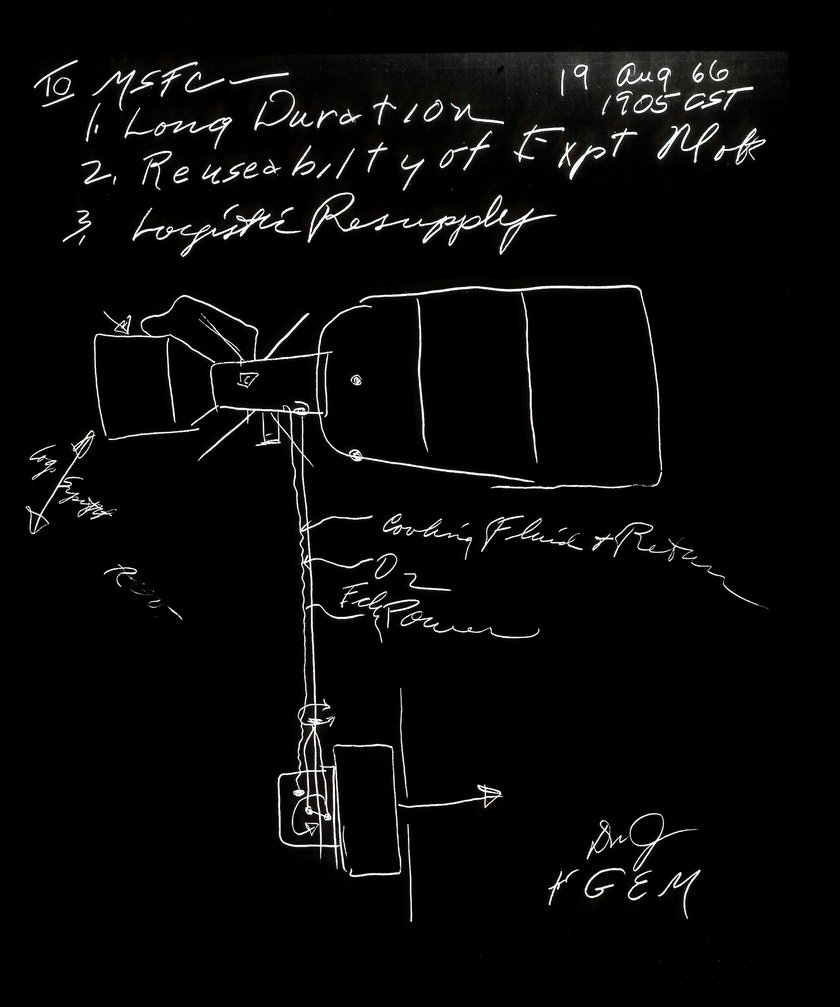
At a meeting at the Marshall Space Flight Center in Huntsville, Alabama, on August 19, 1966, George E. Mueller, NASA Associate Administrator for Manned Space Flight, used a felt pen and poster paper to pin down the final conceptual layout for the budding space station’s (established as the Skylab in 1970) major elements.
5.
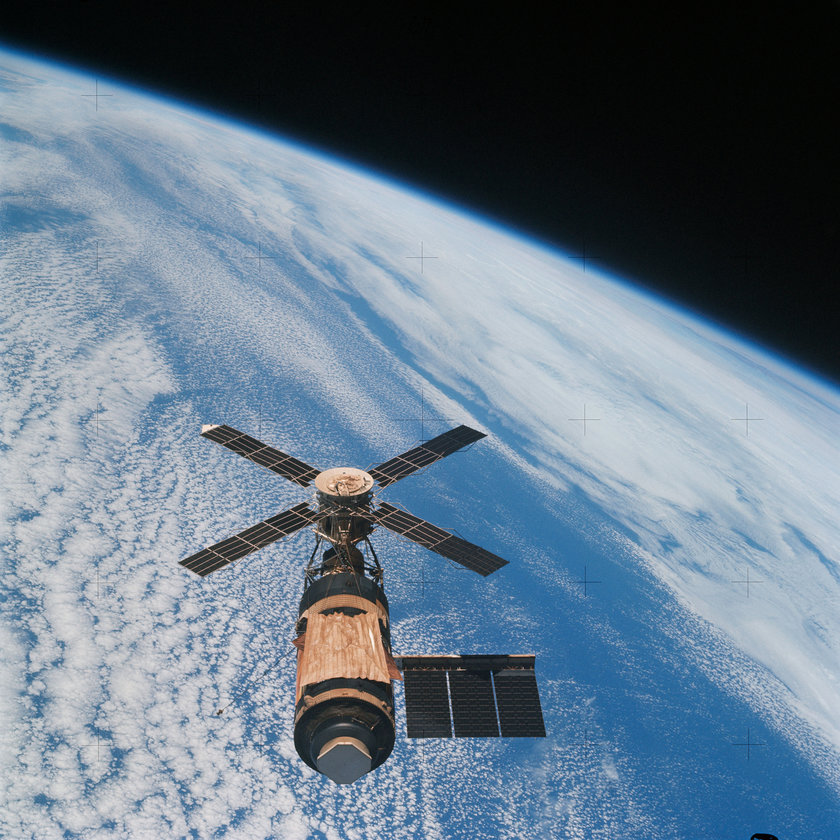
On February 8, 1974, Skylab’s final manned mission (Skylab 4) left behind America’s first space station after a stay of 84 days during which its crew accumulated 1,214 Earth orbits, conducted more than 22 hours of extravehicular activity (EVA), and observed and photographed the Comet Kohoutek. NASA’s Marshall Space Flight Center in Huntsville, Ala. held overall responsibility for the launch vehicles, many hardware elements, and numerous experiments.
6.
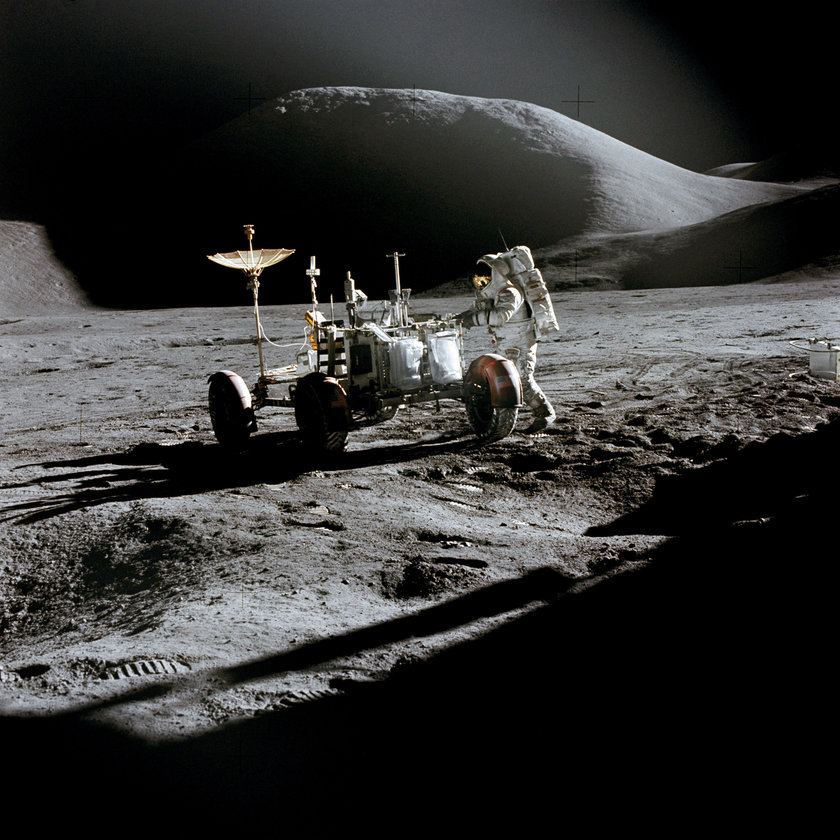
On July 31, 1971, the Lunar Roving Vehicle (LRV) made its lunar debut. The LRV, developed my Marshall Space Flight Center in Huntsville, Alabama, would travel just over 17 miles, logging three hours and two minutes of driving time. The LRV greatly expanded the range of the Apollo astronauts’ lunar surface activities and experiments. This photograph, taken by commander David R. Scott, shows lunar module pilot James B. Irwin working at the Lunar Roving Vehicle during the first Apollo 15 lunar surface extravehicular activity (EVA) at the Hadley-Apennine landing site.
7.
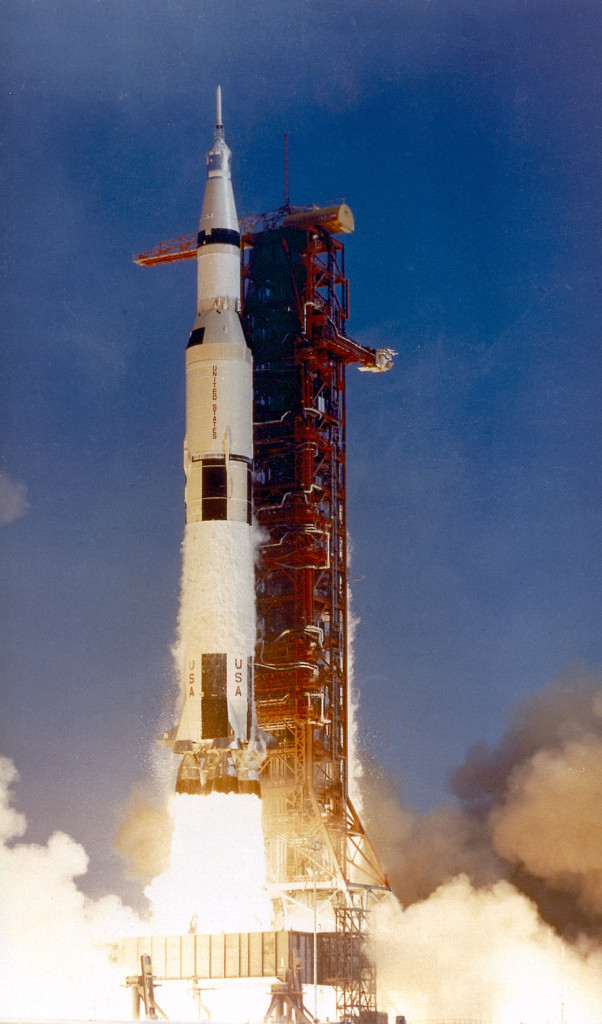
Saturn V launch vehicle (SA-506) for the Apollo 11 mission liftoff at 8:32 am CDT, July 16, 1969, from launch complex 39A at the Kennedy Space Center. Apollo 11 was the first manned lunar landing mission with a crew of three astronauts: Mission commander Neil A. Armstrong, Command Module pilot Michael Collins, and Lunar Module pilot Edwin “Buzz” E. Aldrin, Jr. It placed the first humans on the surface of the moon on July 20 and returned them back to Earth on July 24.
8.
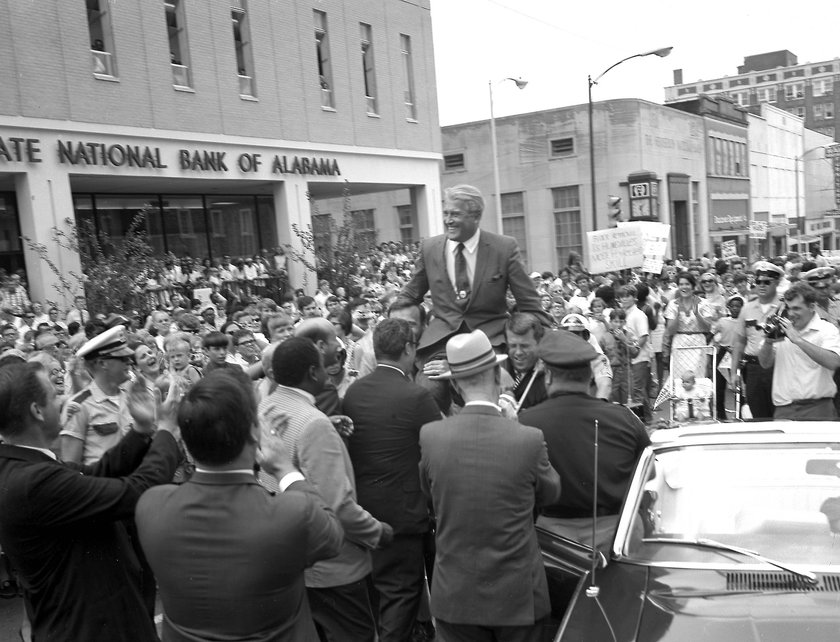
Dr. Wernher von Braun, the first center director of NASA’s Marshall Space Flight Center in Huntsville, Alabama, is carried aloft on the shoulders of city officials during the Apollo 11 celebration in downtown Huntsville on July 24, 1969. The Marshall Center worked with companies across America to build the Saturn vehicles under the direction of von Braun. The Apollo 11 lifted off in July and made the first manned lunar landing on the moon.
9.
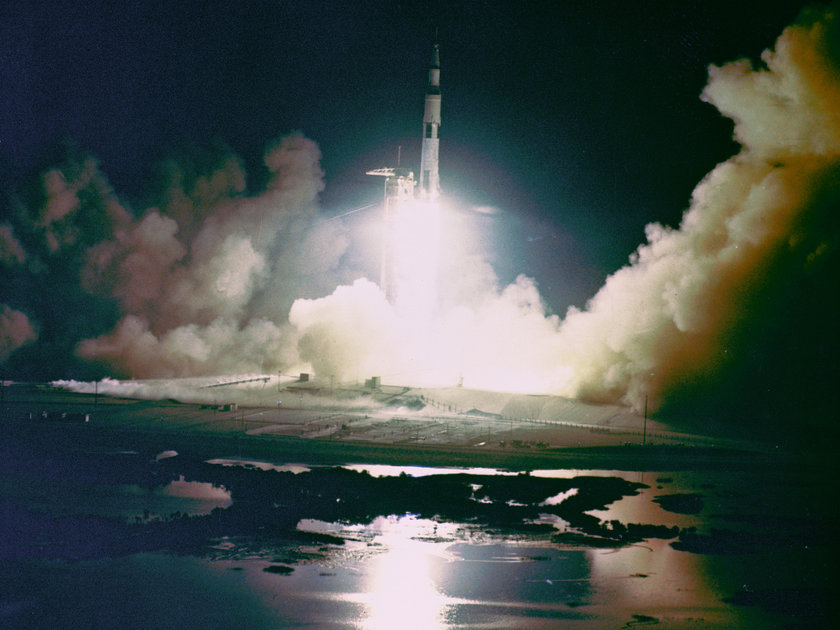
Apollo 17, the final lunar landing mission, was the first and only night launch of a Saturn V rocket developed by NASA’s Marshall Space Flight Center in Huntsville, Ala.
10.
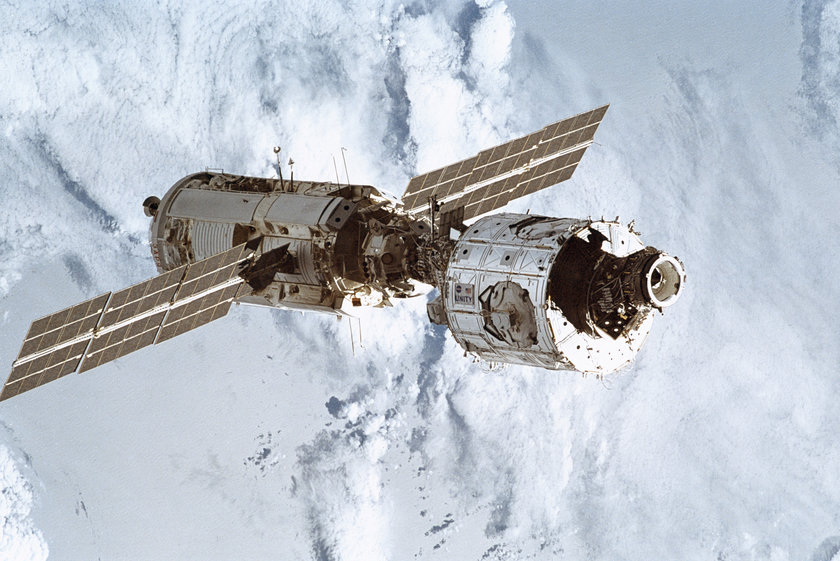
On Dec. 4, 1998, the International Space Station (ISS) Node 1, known as Unity, was launched aboard the Space Shuttle Endeavour (STS-88) and was connected to the Russian-built Functional Energy Block Zarya two days later on Dec. 6, 1998. Unity, a six-sided connector to which all future U.S. Station modules will attach, was manufactured by The Boeing Company at the Marshall Space Flight Center in Huntsville, Ala. from 1994 to 1997 and was the first U.S. module for the ISS. This photograph shows the connected Zarya (top with solar wings) and the Unity Module after having been released from the Orbiter Endeavour’s cargo bay.
11.
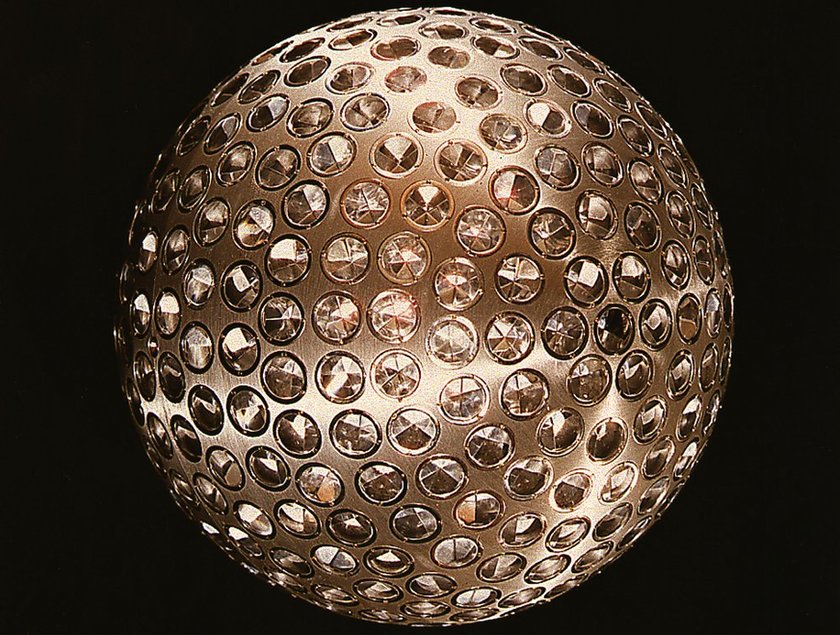
The LAGEOS I, Laser Geodynamics Satellite, was launched on May 4,1976 from Vandenberg Air Force Base, California. The two-foot diameter, 900-pound satellite orbited the Earth from pole to pole and measured the movements of the Earth’s surface relative to earthquakes, continental drift, and other geophysical phenomena. The mirrored surface of the satellite precisely reflected laser beams
from ground stations for accurate ranging measurements. Scientists at NASA’s Marshall Space Flight Center in Huntsville, Ala. came up with the idea for the satellite and built it at the Marshall Center.
12.
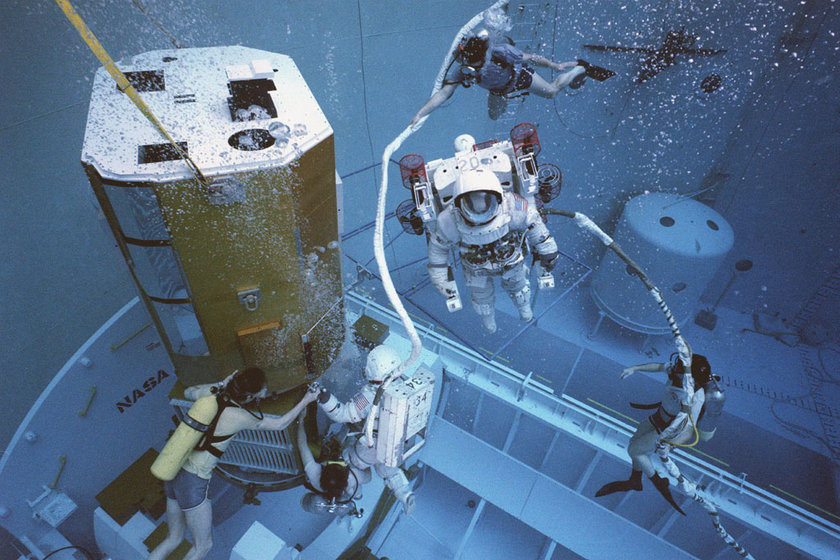
On April 1, 1983, divers and astronauts at NASA’s Marshall Space Flight Center in Huntsville, Ala., prepared for the first satellite repair mission in space. Before the repair, the crew of Space Shuttle Challenger mission STS-41-C spent months at the Marshall Center Neutral Buoyancy Simulator, an underwater training facility that is now a historic landmark. The mission ultimately succeeded.
13.
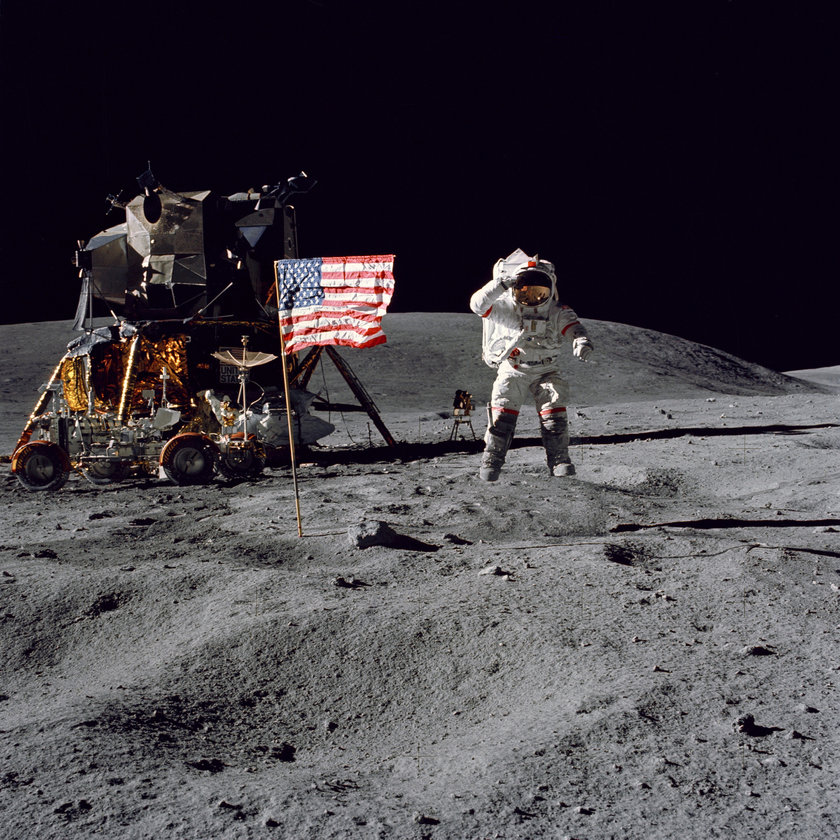
On April 16, 1972, the sixth manned lunar landing mission, Apollo 16, launched from Kennedy Space Center, Fla. on its way to conduct scientific investigations on the Moon’s Descartes highlands. The mission was also the first usage of the Moon as an astronomical observatory with the use of the ultraviolet camera/spectrograph which photographed ultraviolet light emitted by Earth and other celestial objects. In this photo taken by lunar module pilot Charles M. Duke, commander of the Apollo 16 lunar landing mission, John W. Young, salutes the United States flag during the mission’s first extravehicular activity. Both the Lunar Module (LM) “Orion” and the Lunar Roving Vehicle (LRV) can be seen in the background. NASA’s Marshall Space Flight Center in Huntsville, Ala. held overall responsibility for both the Saturn V launch vehicle and the LRV.
14.
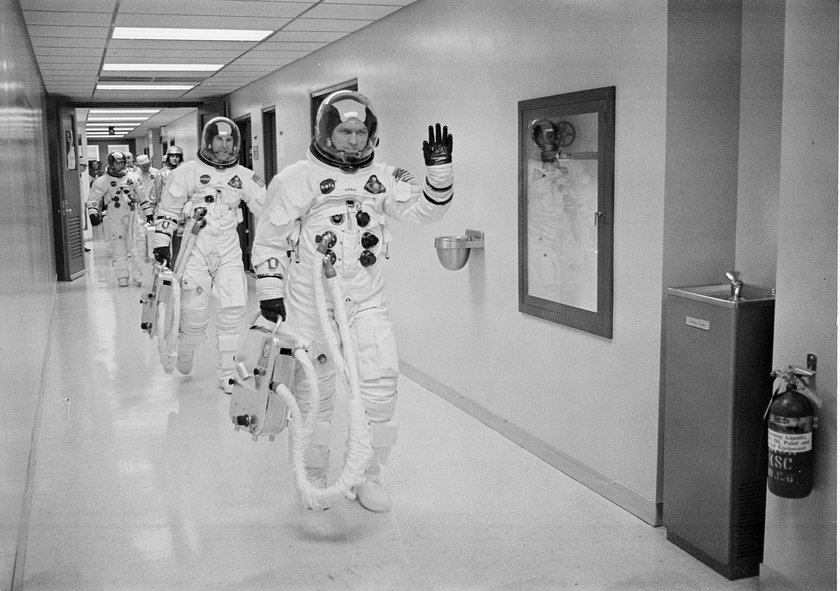
The December 21, 1968 launch of Apollo 8 (AS-503) from Cape Kennedy, Fla. was the beginning of a mission designed to test the Apollo system and gain the operational experience necessary to realize President Kennedy’s goal of “landing a man on the Moon and returning him safely to Earth.” In this photo, Commander Colonel Frank Borman leads the way as he, Command Module Pilot Captain James A Lovell Jr., and Lunar Module Pilot Major William A. Anders head to the launch pad for humanity’s maiden voyage around the moon and its first aboard the Saturn V vehicle, developed by NASA’s Marshall Space Flight Center in Huntsville, Ala.
Huntsville ain’t called the Rocket City for nothin’.
Like this article? Hate it? Follow me and let me know how you feel on Twitter!
— Elizabeth BeShears (@LizEBeesh) January 21, 2015
Don’t miss out! Subscribe today to have Alabama’s leading headlines delivered to your inbox.
